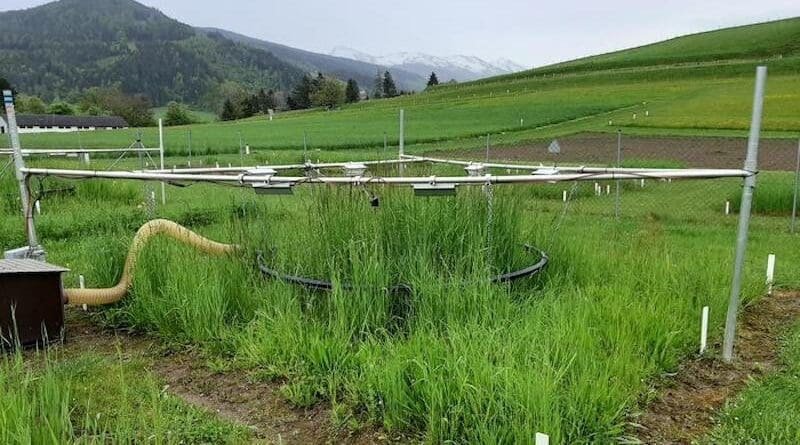How climate change may alter hydrology of grassland ecosystems
New research reveals that drought and increased temperatures in a CO2-rich climate can dramatically alter how grasslands use and move water. The study provides the first experimental demonstration of the potential impacts of climate change on water movement through grassland ecosystems, which make up nearly 40% of Earth's land area and play a critical role in Earth's water cycle.
New research co-led by the University of Maryland reveals that drought and increased temperatures in a CO2-rich climate can dramatically alter how grasslands use and move water. The study provides the first experimental demonstration of the potential impacts of climate change on water movement through grassland ecosystems, which make up nearly 40% of Earth's land area and play a critical role in Earth's water cycle. The study appears in the January 17, 2025, issue of the journal Science.
"If we want to predict the effects of climate change on Earth's water resources, we need data showing how the hydrologic cycle will respond at a small scale where we can define mechanisms, but that just hasn't been available," said Jesse Radolinski corresponding author of the study, a post-doctoral research associate in the UMD Department of Environmental Science & Technology who began the work at the University of Innsbruck. "Our experiments found that under summer drought conditions, and higher air temperatures that are expected under a future with elevated CO2, two things change fundamentally: One, the structural properties of the soil in the root zone change so that water flows differently than we expected, and two, these altered climate conditions and soil properties cause the plants to access water differently."
Currently, new rainfall tends to linger in the root zone where it mixes with existing soil water (i.e., previous rainfall) before percolating into local streams and rivers. Radolinski said this study suggests that under future climate conditions, intense rainfall may move more quickly through the soil into local water bodies, interacting less with this stored water and potentially bringing nutrients and pollutants with it. In addition, plants subjected to these future drought conditions conserve more water, releasing less back to the atmosphere through transpiration. That could mean less atmospheric cooling, triggering a feedback loop of more drought and more warming.
Radolinski and his colleagues conducted their experiment with the University of Innsbruck in open plots in an Austrian grassland. They simulated six different climate conditions by manipulating air temperature and CO2 levels, and introducing recurring drought with large, automatically deployed shelters that prevented natural rainfall from reaching the plots. When they simulated rainfall, they used water with a traceable isotope of hydrogen called deuterium, and then tracked its path through the plants and the soil.
Their results showed that after recurring droughts in plots with elevated CO2 and warming, the structure of pores in the soil changed so that older water could remain locked in smaller pores, while newer water flowed into larger pores that drained more quickly. In addition, the plants were effective at accessing the most readily available soil moisture and conserved water loss by releasing less to the atmosphere through transpiration. This may help plants adapt to water stress under future drought conditions, though more research is needed to tease out the effects on growth.
The study reveals that soil and plant water interactions could be much more complex than previously thought, with significant consequences for the ability of ecosystems to withstand and recover from drought. These insights will be critical in informing conservation strategies and managing ecosystems in a rapidly changing climate.
Radolinski completed his fellowship as a post-doctoral research associate in the laboratory of Dr. Gurpal Toor in January, 2025. The study was an international collaboration co-led by researchers at the University of Innsbruck.
Story Source:
Materials provided by University of Maryland. Original written by Kimbra Cutlip. Note: Content may be edited for style and length.
Journal Reference:
Jesse Radolinski, Matevz Vremec, Herbert Wachter, Steffen Birk, Nicolas Brüggemann, Markus Herndl, Ansgar Kahmen, Daniel B. Nelson, Angelika Kübert, Andreas Schaumberger, Christine Stumpp, Maud Tissink, Christiane Werner, Michael Bahn. Drought in a warmer, CO 2 -rich climate restricts grassland water use and soil water mixing. Science, 2025; 387 (6731): 290 DOI: 10.1126/science.ado0734

